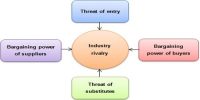Measurement of Actual Performance
Once performance standards are set, the next step is the measurement of actual performance. Performance should be measured in an objective and reliable manner. There are several techniques for the measurement of performance. These include personal observation, sample checking, performance reports, etc. As far as possible, performance should be measured in the same units in which standards are set as this would make their comparison easier.
Measuring performance is a vital part of assessing the value of employee and management activities. Most organizations prepare formal reports of performance measurements that managers review regularly. Performance should be measured based on an employee’s overall impact, cost efficiency, effectiveness, and ability to implement best practices.
Measurement Tools of Actual Performance
- Punctuality
- Quality of work
- Observe personal habits
- Review personal presentation
- Carry out a client survey
It is usually believed that measurement should be done after the task is completed. However, wherever possible, measurement of work should be done during the performance. These measurements should be related to the standards set in the first step of the control process. For example, if sales growth is a target, the organization should have a means of gathering and reporting sales data. However, in order to facilitate easy comparison, the performance should be measured on the same basis that the standards have. In the productivity and quality‐centered environment, workers and managers are often empowered to evaluate their own work.
Following are some of the ways for measuring performance:
(a) Superior prepares a report regarding the performance of an employee.
(b) Various ratios like gross profit ratio, debtor turnover ratio, return on investment, current ratios, etc. are calculated at periodic intervals to Measure Company’s performance.
(c) Progress made in areas like marketing can be measured by considering the number of units, an increase in market share, etc.
(d) In small organizations, each unit produced can be checked personally to ensure quality standards.
(e) In large organizations, the technique of sample checking is used. Under this technique, some pieces are checked at random for quality specifications.
For instance, in the case of assembling tasks, each part produced should be checked before assembling. Similarly, in a manufacturing plant, levels of gas particles in the air could be continuously monitored for safety. The most effective course may be prescribed by policies or maybe best left up to employees’ judgment and initiative.
In small organizations, each piece produced may be checked to ensure that it conforms to quality specifications laid down for the product. However, this might not be possible in a large organization. When performance deviates from standards, managers must determine what changes, if any, are necessary and how to apply them. Thus, in large organizations, certain pieces are checked at random for quality. This is known as sample checking.
















